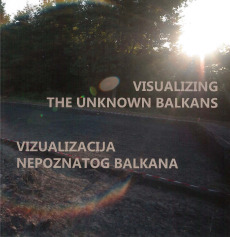Visualizing the Unknown Balkans ‒ Vizualizacija nepoznatog Balkana
Herausgegeben von Mario Gavranović, Herausgegeben von Barbara Horejs, Herausgegeben und übersetzt von Mario Gavranovic, Herausgegeben von Horejs Barbara
The idea for this booklet is closely related to the research focus on Balkan archaeology of the OREA Institute of the Austrian Academy of Sciences and its various collaboration partners. Thanks to the financial support of the Innovation Fund of the Austrian Academy of Sciences, it has been possible to realize the Visualizing the Unknown Balkans project over the last two years. The present booklet aims to set out a physical paper-based summary accompanying a digital 3D movie produced within the framework of the Innovation Fund project. The fragmentation of modern-day archaeology on the Balkans, its high impact on the European past and its scientific attractiveness constitute our starting point for turning a new spotlight on Balkan archaeology for a broader audience.
Visualizing the complex and multi-level research results of interdisciplinary teams represents one of the challenges in state-of-the-art archaeology these days. In explaining and disseminating the outcome of excavations and fieldwork, we could have realized various initiatives for a scientific and broader public. Open-days for guests and press conferences during the excavations in Bosnia and Herzegovina and in Serbia have attracted lots of media attention since 2018. Our new results have been presented in lectures at the Austrian embassies in Belgrade and Sarajevo as well as in lectures held at several international scientific congresses. Recently excavated objects and finds from Svinjarička Čuka (Serbia) were presented in an exhibition and its accompanying catalogue at the Schallaburg in Lower Austria in 2020.
Implementing this multi-level visualization approach was only possible due to the engaged support of many institutions. We are thankful to all the Serbian authorities, especially the Serbian Ministry of Culture and Heritage and our collaboration partners at the Institute of Archaeology in Belgrade. The Ministry for Education, Science, Culture and Sport of the Zenica-Doboj Canton supported our investigations in Bosnia and Herzegovina. We would also like to thank the Armed Forces of Bosnia and Herzegovina for providing help during the excavation in Bijeljina. We additionally thank the National Museum in Leskovac, the Museum of Mining and Metallurgy in Bor, the Museum of Semberija in Bijeljina and the Museum of the City of Zenica. We would like to express our sincere thanks to the Austrian Embassy in Belgrade, the ambassador Nikolaus Lutterotti and Sabine Kroissenbrunner as well as to the cultural attaché Adrien Feix
and the first secretary of the Austrian Embassy in Sarajevo, Nicola Hardwick.
The results presented here are based on ongoing research fieldwork in the Balkans, funded by the Austrian Science Fund (FWF projects no. P32096-G25 and no. P32095-G25). We especially thank the Austrian Academy of Sciences and its Innovation Fund for supporting our initiative. We would like to thank the Austrian Academy of Sciences Press for supporting this publication, Angela Schwab for the layout of the present booklet, Irene Petschko for its organization, Felix Ostmann for the help with images/photos and Nicola Wood for the English editing. Finally, we thank each and every member of our excavation teams and all authors for sharing their expertise with us, namely Snježana Antić, Michael Brandl, Aleksandar Bulatović, Clare Burke, Aleksandar Kapuran, Bogdana Milić, Mathias Mehofer, Ognjen Đ. Mladenović, Irene M. Petschko and Lukas Waltenberger (in alphabetical order).
We hope that the present booklet supports the Visualizing of the Unknown Balkans, revives further interest and informs a broader audience about the continued attractiveness of Balkan archaeology.
Produktinformationen
Englisch Broschur115 Seiten , Format 21,0 x 21,0
2 Auflage,
Österreichische Akademie der Wissenschaften
2020
Paperback
9,90 € inkl. MwSt.
Erscheinungsdatum
Oktober 2020
Kategorie: Geschichte